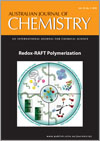
Australian Journal of Chemistry
Volume 72 Number 7 2019
CH19109Redox-Initiated Reversible Addition–Fragmentation Chain Transfer (RAFT) Polymerization
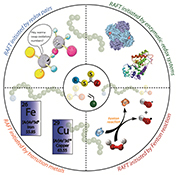
The capability of several redox initiation systems and their application in initiating reversible addition–fragmentation chain transfer (RAFT) polymerization are reviewed. The redox-RAFT technique is therefore a core part of the RAFT methodology handbook and may be of particular significance going forward for the fabrication of polymer-based biomaterials under bio-related conditions.
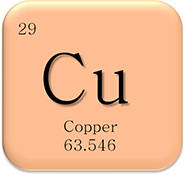
This element series article focuses on copper, from its early use for plumbing to its modern use as a catalyst for click chemistry.
CH18625Synthesis and Characterization of Two Chiral Pyrrolyl α-Nitronyl Nitroxide Radicals and Determination of their Cytotoxicity and Radioprotective Properties in C6 Cells and Mice under Ionizing Radiation
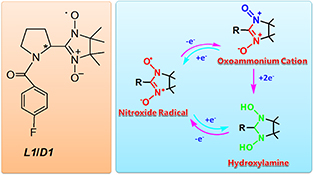
A pair of chiral nitronyl nitroxyl radicals, L1 and D1, were synthesized and characterized using UV-vis absorption, ESR, and CD spectroscopy. They are good free radical scavengers and can be converted into their reduced form, hydroxylamine, in the redox process. Our findings showed that L1 and D1 are worthy of further study as potential therapeutic drugs against radiation damage.
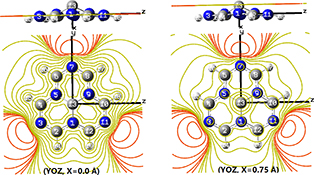
As one of the support tools, molecular electrostatic potential (MEP) was used to describe the electron distribution of the carbanionoid species in this work since it can explicitly locate electrophilic sites in a molecule. It is found that the vertex carbon atom C13 of the pyramidal core C7N6 is a strong nucleophilic site in the MEPs. The carbanion-like, or carbanionoid properties of these molecules are further verified.
CH18576Cellulose-Supported Ionic Liquid Phase Catalyst-Mediated Mannich Reaction
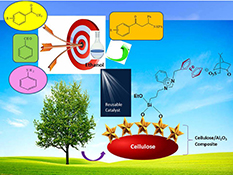
Cellulose-supported ionic liquid phase catalyst containing the camphor sulfonate anion was employed as a heterogeneous catalyst in the synthesis of β-amino carbonyl compounds via Mannich reaction. Good yields, short reaction time, cleaner reaction profiles, and easy recyclability and reusability of catalyst are noteworthy advantages offered by this method.
CH19046Versatile Synthesis of Functionalized Tetrahydroisoquinolines by Ring Transformation of 2H-Pyran-2-ones

Functionalized tetrahydroisoquinolines are convenient precursors for the construction of numerous heterocyclic compounds of therapeutic importance. We have illustrated an efficient synthesis of highly substituted tetrahydroisoquinolines from 2H-pyran-2-ones via nucleophile-mediated ring transformation with tert-butyl-4-oxopiperidine-1-carboxylate followed by acid-mediated cleavage of the tert-butyloxycarbonyl group. The products were achieved smoothly in high yields with flexibility of various substituents.
CH19119Trans-4-[4-(dimethylamino)styryl]-1-methylpyridinium Iodide@Hemimethylcucurbit[6]uril Fluorescent Probe for Anion Recognition
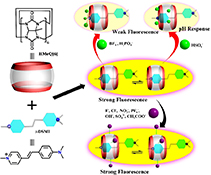
A host–guest system of a hemimethyl-substituted cucurbit[6]uril (HMeQ[6]) and trans-4-[4-(dimethylamino)styryl]-1-methylpyridinium iodide (t-DSMI) has been used as a fluorescent probe. The study on the detection of a series of inorganic anions has revealed that this fluorescent probe shows responses to BF4−, H2PO4−, and HSO4− via distinct fluorescence quenching.
CH19088Convenient One-Pot Four-Component Synthesis of 6,8-Disubstituted-5,6,7,8-tetrahydropyrimido[4,5-d]pyrimidin-4(3H)-ones via a Triple Mannich Reaction
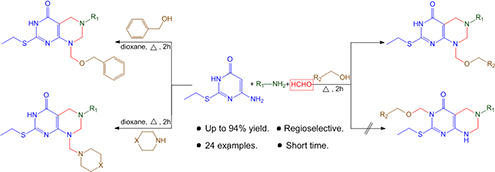
An efficient, simple, one-pot four-component protocol has been developed for the synthesis of 6,8-disubstituted-5,6,7,8-tetrahydropyrimido[4,5-d]pyrimidin-4(3H)-ones via a triple Mannich reaction.
CH19052A Rapid and Sensitive Aptasensor for Cyromazine Detection in Raw Milk Based on a Nanogold Probe and G-Quadruplex Formation
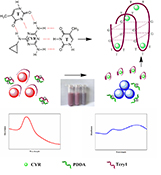
In this study, we designed a biosensor to detect cyromazine in raw milk. The aptamer can self-assemble to form a stable G-quadruplex in the presence of cyromazine, so the gold nanoparticles lose the protection from the aptamer and aggregate. As a result, a significant colour change can be distinguished by the naked eye.




